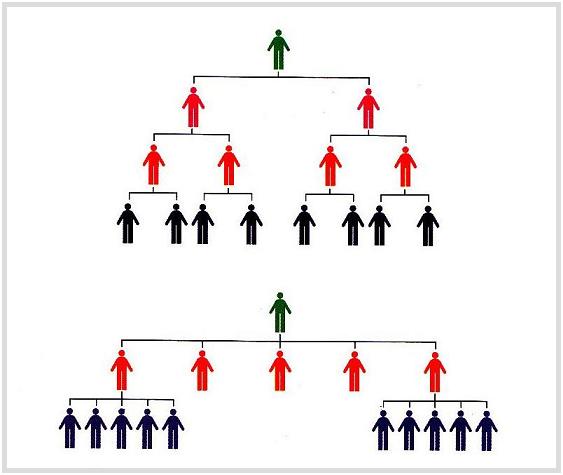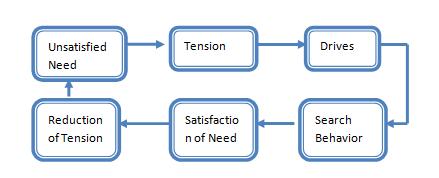An organisation structure is a set of planned relationships between groups of related functions and between physical factors and personnel required for the performance of the functions. The organisation structure is generally shown on the organisation chart. It shows authority and responsibility between various positions in the enterprises by showing who reports to whom. Organisation structure lays down the pattern of communication and coordination in the enterprises. Though organisation structure is very important, it is not an end in itself. According to Peter F. Drucker, “Organisation is not an end itself, but a means to end of business performances and business results. Organisation structure is an indispensable means; and the wrong structure will seriously impair business performance and may even destroy it. Organisation structure must be designed so as to make possible the attainment of the objectives of the business for five, ten, fifteen years hence.” Process of Organizing Organisation Continue reading
Principles of Management
Decentralization of Authority
By decentralization of authority we mean dispersal of decision-making authority at various levels in the organization. In a centralized set-up, decision-making authority is concentrated at the top-level of the management, whereas in the decentralized set-up, many important decisions are made at the lower level also. The most significant feature of decentralization of authority is that most of the decisions made at the lower level do not need approval of the seniors. This means greater freedom is given in decision-making to lower level managers and supervisors in the organization. Factors Determining the Degree of Decentralization Importance and significance of the decision: One of the important factors determining the degree of decentralization of authority is costliness of the decision. Normally, decisions which are costly in terms of money value involved or in terms of factors like goodwill and image of the establishment, employee morale or motivation tend to be centralized at the Continue reading
Span of Management Types
Span of management directly affects the number of levels in the organization. Span of management is of two types; Wider span of management and Narrow span of management. Wider span of management leads to flat organization whereas narrow span of management result in tall organization structure. The principle of span of management does not by itself resolve the conflict between the advantages to tall organization and that of a flat one. Narrow spans lead to many levels in the organization and thus required a larger number of managers. This, in turn, leads to larger expenses in the form of executive remuneration. Expenses are further increased on account of additional clerical and office staff needed as a result of there being large number of managers. The process of control also gets complicated when there are narrow spans and too many levels in the organization structure. Another serious problem in having Continue reading
Span of Management
An organization is characterized by the presence of a number of levels and departments. But more the levels are created, more will be the administrative cost due to additional staff required and more will be the difficulties to be encountered in communication and controlling. If this is so, why create departments and levels? Answer to this question is provided by the principle of span of management. This is basically the problem of deciding the number of subordinates to report directly to each manager. The principle states that there is a limit to the number of subordinates that each manager can effectively supervise. The term “span of management” is often referred to as span of control, span of supervisions, span of responsibility or span of authority. But the term “span of management” should preferably be used since span is one of management and not merely or control which is just important Continue reading
Principles of Organization Structure
Traditional organisation theorists developed certain principles of organization structure. These principles are intended for universal application to all enterprises. The most important of these principles of organization structure can be listed under the following heads: 1. Division of Labor or Specialization The classicists viewed specialization as the basis of efficiency. A group of individuals can secure better results by having division of work. F.W. taylor applied by breaking down jobs into single repetitive tasks performed on specialized tools. At higher levels, however, grouping jobs into manageable units and their co-ordination can pose serious problems. The principle of specializations has been challenged by the behaviorists and others. Fatigue, monotony and boredom are the inevitable outcomes of division of labor. While specializations cause great function interdependency among operatives, it also depersonalizes their activities so that individuals find little meaning in the work. Moreover, functional interdependency among work activities causes strains and tensions. Continue reading
Motivation – Definition, Process, Types, Features and Importance
Definitions of Motivation The word Motivation derives from the Latin word “Movere”. The Latin word “Movere” means “To move”, “To drive” or “To drive forward” etc. Motivation can be defined as stimulating, inspiring and inducing the employees to perform to their best capacity. Motivation is a psychological term which means it cannot be forced on employees. It comes automatically from inside the employees as it is the willingness to do the work. Joe Kelly defined Motivation as “Motivation is a process where by needs instigate behavior directed towards the goals that can satisfy those needs.” According to W. G. Scot, “Motivation means a process of stimulating people to action to accomplish the desired goals.” According to Michael J. Jucius, “Motivation is the act of stimulating someone or oneself to get a desired course of action, to push the right button to get a desired results.” Process of Motivation Unsatisfied Continue reading



